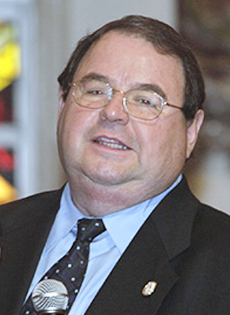
History of the eucharistic celebration XIII
St. Pius X, the liturgical movement and Venerable Pius XII
Monday, October 26, 2020
*Rogelio Zelada
The Council of Trent laid the solid foundation the Church needed to undertake a thorough Catholic reform. Seminaries for the formation of the clergy — the great Tridentine success — and the advent of religious orders determined to renew the Church yielded great fruits among believers.
In the 17th and 18th centuries, the French Church experienced an important interest in the liturgy. The bars that enclosed the sanctuary or presbytery were removed, popular chant was encouraged, and the missal was translated into French, so that the faithful could follow the rites of the Mass in bilingual editions. At the same time and with great interest, a catechesis was offered to the people to help them understand the ritual meaning of the celebrations. The new devotion to the Sacred Heart of Jesus was key to fostering frequent Communion, monthly or weekly.
Two great movements would strengthen the renewal of the celebration of faith in the Church: the liturgical movement, with the strong support of the Benedictine monasteries, and the biblical movement, in the quest to apply new tools to understand more clearly the language of Sacred Scripture.
Pope Pius XII, a follower of the renewal efforts of St. Pius X, understood the necessary renewal of the liturgy as "the movement of the Holy Spirit through the Church of our time to bring believers closer to the sources of grace." St. Pius X had already championed this idea, convinced that "the active participation of the faithful" in the celebration of the liturgy is the "foremost and indispensable" source of the true Christian spirit. Pius X believed that it was extremely important to invite Catholics to frequent Communion, and especially children who could and should begin to receive Communion when they reached the age of reason.
This call of the pope was not received with much enthusiasm in some places but the invitation to frequent Communion was happily accepted. Despite the efforts of the Holy Father, it was not until the 1950s that Communion could be received within the Mass, since the rite of distribution took place immediately before or after the liturgical celebration. According to the possibilities or the demand of the faithful, it was customary to distribute Communion every hour or half an hour in the churches that had a good number of clergy or large religious communities at their service.
At the end of World War I, Pius X's proposals came to fruition with the appearance of a new form of participation: the Dialogue Mass, which, in order to overcome the obstacle of Latin, incorporated the simultaneous reading of biblical texts. Thus, while the priest read the text of the Gospel in a very low voice, a layman proclaimed it simultaneously in the vernacular.
This stage of the renewal of the liturgy allowed the laity to enter the sanctuary for the first time. An important interest in the singing of the psalms grew rapidly. They were translated and adapted musically to a great diversity of languages, and the use of the vernacular within the singing at the solemn Mass and Sunday Masses was approved. Most importantly, the faithful were able to participate in evening Masses, as Pius XII eased the law of eucharistic fasting, which went from being the night before to just three hours before sacramental Communion.
From 1953 onward, the liturgical services — which could only be celebrated in the morning hours — recovered their natural timetable; not only did the daily or Sunday Mass return to the more normal afternoon or evening hours, but mainly the Holy Week services were framed in a more logical and meaningful context. Consequently, the solemn Easter Vigil found that nighttime made the best sense for the liturgy of fire and light. When the canticle asked, that the light of "this candle ... overcome the darkness of this night," it did not clash with the splendorous sun of 10 in the morning, but was greeted by a darkened church, enveloped by the real night of Holy Saturday.


Comments from readers